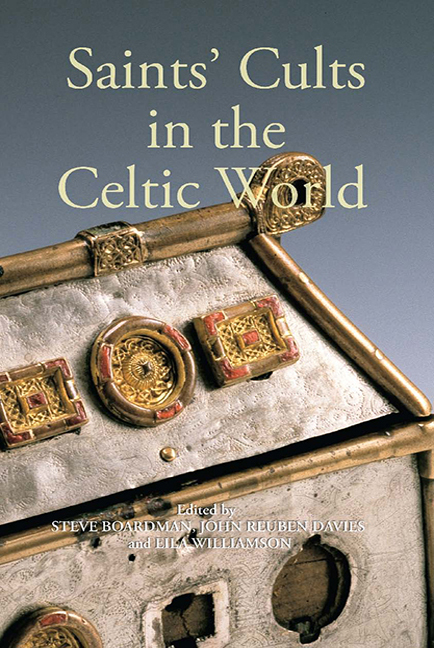Book contents
- Frontmatter
- Contents
- List of Illustrations
- List of Contributors
- Abbreviations
- Editors’ Preface
- 1 Rochester, Hexham and Cennrígmonaid: the movements of St Andrew in Britain, 604–747
- 2 The cults of Saints Patrick and Palladius in early medieval Scotland
- 3 Personal names and the cult of Patrick in eleventh-century Strathclyde and Northumbria
- 4 Bishop Kentigern among the Britons
- 5 Adjacent saints’ dedications and early Celtic History
- 6 Cuthbert the cross-border saint in the twelfth century
- 7 David of Scotland: ‘Vir tam necessarius mundo’
- 8 The cult of Saint George in Scotland
- 9 The cult of the Three Kings of Cologne in Scotland
- 10 The medieval and early modern cult of St Brendan
- General Index
- Miscellaneous Endmatter
6 - Cuthbert the cross-border saint in the twelfth century
Published online by Cambridge University Press: 11 May 2017
- Frontmatter
- Contents
- List of Illustrations
- List of Contributors
- Abbreviations
- Editors’ Preface
- 1 Rochester, Hexham and Cennrígmonaid: the movements of St Andrew in Britain, 604–747
- 2 The cults of Saints Patrick and Palladius in early medieval Scotland
- 3 Personal names and the cult of Patrick in eleventh-century Strathclyde and Northumbria
- 4 Bishop Kentigern among the Britons
- 5 Adjacent saints’ dedications and early Celtic History
- 6 Cuthbert the cross-border saint in the twelfth century
- 7 David of Scotland: ‘Vir tam necessarius mundo’
- 8 The cult of Saint George in Scotland
- 9 The cult of the Three Kings of Cologne in Scotland
- 10 The medieval and early modern cult of St Brendan
- General Index
- Miscellaneous Endmatter
Summary
In the mid-twelfth century, a Durham monk named Alan was sent by Bishop Hugh du Puiset on a tour of southern Scotland. He travelled throughout East Lothian, across the Forth to St Andrews and Dunfermline, and ventured as far as Perth, carrying with him a small bag of St Cuthbert's relics, which were used in ceremonial processions and to perform a number of miracles during his perambulations.St Cuthbert is often seen as an Anglo-Saxon saint, and certainly his life and cult were integral to the great Anglo-Saxon golden age of the seventh century, but he sits far more comfortably in a northern insular world, where saints’ cults transcended the political border between England and Scotland. This is particularly true of the twelfth century, a time when Anglo-Scottish conflicts resulted in the drawing of political borders but when, paradoxically, Anglo-Scottish saintly connections were particularly prominent. St Cuthbert's cult was indeed flourishing in the twelfth century, predominantly across northern England and southern Scotland, with veneration also extending to southern England and Scandinavia. Cuthbert is thus a very fitting inclusion in a volume on insular saints and his cult suggests the further ties that sainthood represented, between the insular world and the continent.
Much scholarship has been produced on this political border between England and Scotland, and on the importance of Cuthbert's church in Durham to it, on the role of the powerful Durham bishops and their community in this frontier zone. I do not wish to discuss this in detail here, but should briefly summarise. First, it is important to note the great influence and political autonomy of the Durham church, its monastic community and in particular its bishops. G. Scammell's evocative image, in his biography of the long-serving bishop of Durham, Hugh du Puiset (1154–95), encapsulates this most effectively, referring to the long fingers of Angevin power that never pressed too heavily on the Durham episcopate. Thus, while many have emphasised the Norman infiltration of the Durham church, through implantation of bishops and monks from the later eleventh century, it seems that these newcomers operated largely independently of the English power centre in the distant southern reaches of Britain.
- Type
- Chapter
- Information
- Saints' Cults in the Celtic World , pp. 119 - 129Publisher: Boydell & BrewerPrint publication year: 2009

